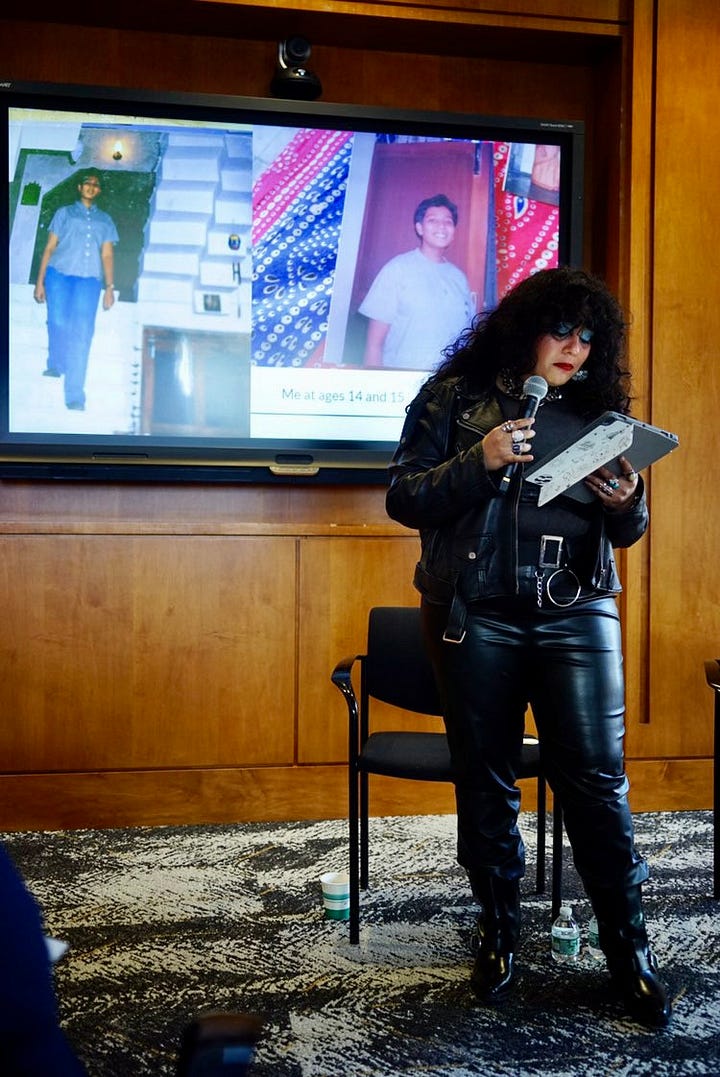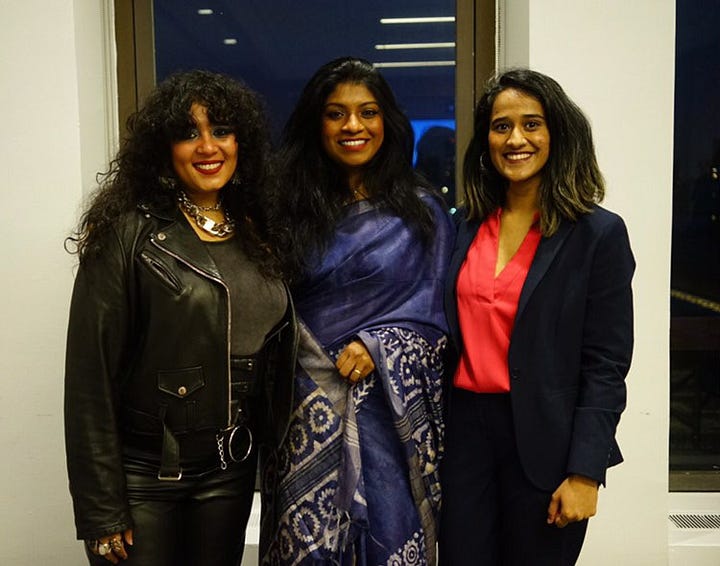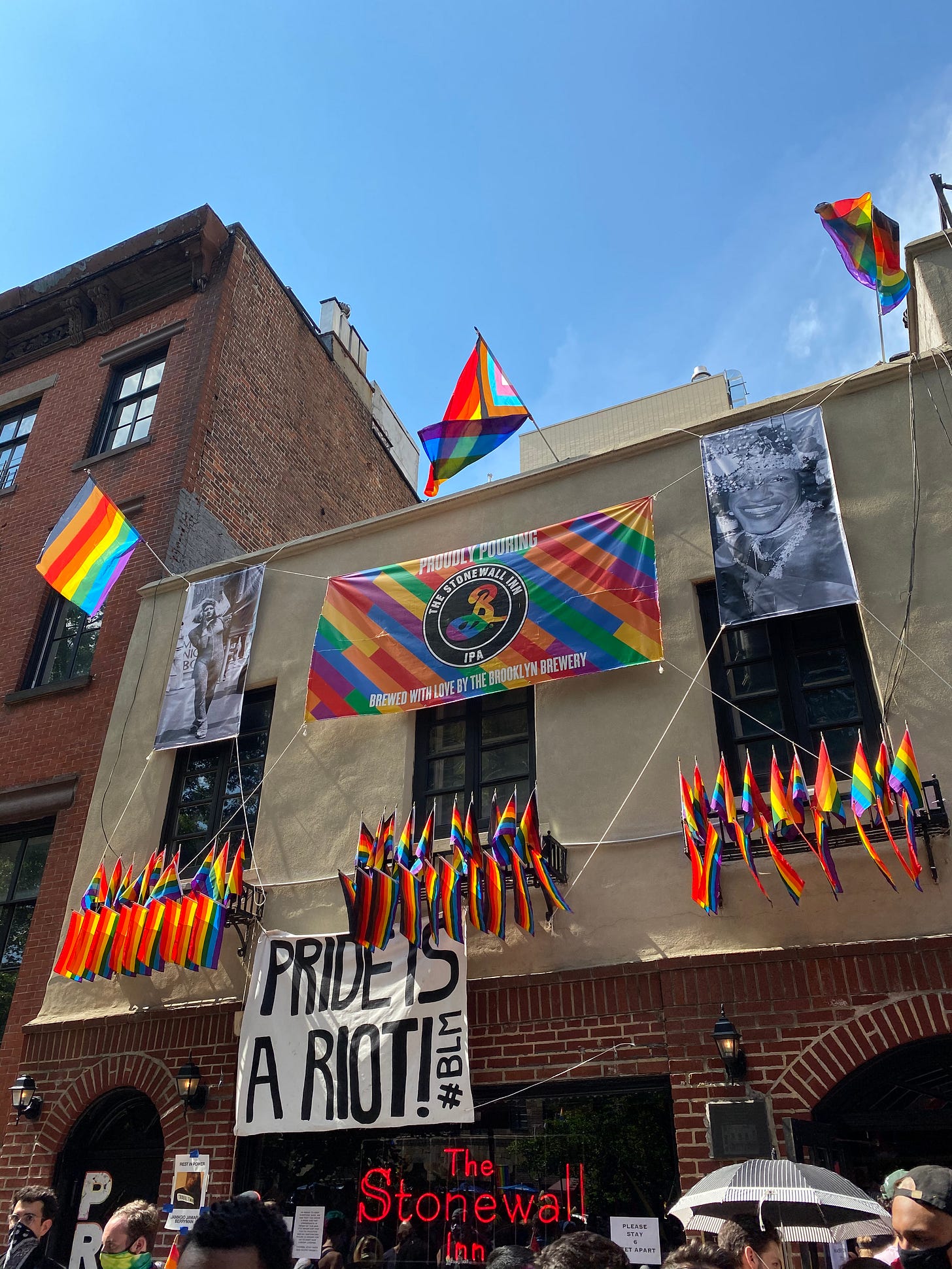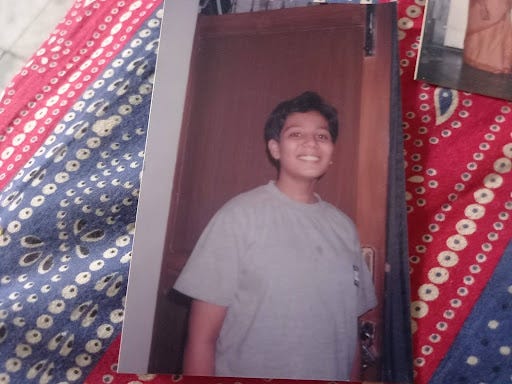Notes on Shame, Bisexuality and Dalit Queerness
An excerpt from the first all-Dalit Women panel on Caste, Gender and Sexuality at Columbia SIPA, April 4, 2024
When I was growing up in a small town in India in the 90s and 2000s, sex and sexuality were deeply taboo subjects, to the extent that the even the name that we were taught to identify our sexual organs had the word ‘shame’ embedded into it. Shamie – the word for vagina was mostly whispered by caretakers, often as an unmentionable last resort after all other euphemistic word choices had failed to deliver the message. Associating shame with genitalia not only communicated that they were somehow loathsome but also shaped the earliest understanding of sexuality for so many of us as dirty, repulsive, and humiliating. This mounting shame that grew with age not only failed to prevent but in fact compounded the sexual abuse that young girls, and young children often face in their own homes, from people – relatives, neighbors, friendly elders – they often know and trust. Studies show that upwards of 95% of Indian children, which includes both boys and girls, who face sexual violence, are abused by a known person, including family members.
At the boarding school I attended at age seven, one of my first introductions to conversations around sex was through an older girl, who was nine, and revealed about the routine abuse by her uncle, which she was convinced was the reason behind her early puberty.
This rampant yet barely discussed danger to young children perhaps explains why my mother’s biggest concern about her young Dalit daughter at the time was to prevent me from experiencing assault, at home, at the playground or in the neighborhood. And she manifested that anxiety, which formed a huge part of my childhood, by constantly warning me about it and going to such lengths as never allowing me to attend dance or music lessons which would often take place at the instructor’s house. Perhaps knowing that her Dalit daughter was more vulnerable to assault because of her caste, and that there will be little repercussion even if it was discovered (since data indicates that sexual violence against children is so massively underreported that it is now addressed as the ‘the conspiracy of silence’).
Dalit women and children are assaulted with even greater impunity as they are casually considered sexual property, especially when placed in vulnerable situations like their employment as domestic workers in homes or performing illegal labor in restaurants and other establishments. A 2022 study from the US department of Labor revealed a staggering persistence of child labor in Indian industry and reported that “child victims of commercial sexual exploitation and forced labor are typically from marginalized groups, such as low-caste Hindus, members of tribal communities, or religious minorities.”
I discuss this here today because this fundamental understanding of sex and sexuality not only molded my own ideas around my own body, that I carried well into adulthood, but they also impacted the relationships I had both as a teen and as an adult. I figured that the only way to counter the idea of an ‘oversexualized Dalit woman’, even though at the time I had made no conscious connections between caste and sexuality, was to completely desexualize my identity and refuse myself even the simplest joys of fashion and being invested in my appearance, like almost other teen girl around me in the early 2000s. Photographs of me from when I was 13, 14, 15, 16 have me dressed in laughably dowdy clothes (which today could be read as butch) and the stubbornly and deliberately unfashionable hair choices that were meant to take all attention away from my appearance. When I did allow myself to dress nicely for a friend’s birthday or other special occasions, I did so with immense remorse, guilt, and apology – as if that’s not who I was meant to be.
I was set on leaving home to study in New Delhi after I finished school, and if I needed my parents to ‘trust’ me to live in a different state and not get pregnant or run away with a man, I needed to look the part. I use the word ‘trust’ because it essentially conveys the barter Indian women need to make with their parents, relatives, even their brothers, whether older or younger, that they will be ‘allowed’ to avail the ‘freedoms’ of education and evening outings if they never interact with any boys or men their age. I had to let the elders in my family know that I could be ‘trusted’ enough to live alone in Delhi by making myself look as ‘unappealing’ as possible.
But I’m sure it surprises no one when I tell you that this did not stop me from exploring relationships, especially with women as I conveniently attended an all-girls school and therefore did not have to worry about getting pregnant or being ‘seen with boys’. In fact, presenting as not femme at the time only made that easier if you can believe. But bisexuality back then, as unfortunately it is now, was not considered a viable form of sexuality. I remember being in the shower one afternoon, a few months into my first relationship at 15 and thinking “Do I like women now? What about the crushes I had on the boys constantly — I wasn’t yet ready to acknowledge that I was equally crushing on girls too — Does this mean I have to start dressing butch and make my already challenging life as Dalit women in a low income household who was also hiding her caste, even more difficult?” I remember the relief that coursed through my spine when I convinced myself that I only liked men and that this was just something I was involved in at that time. I already knew how to pass as dominant caste; how hard could it be to push down the feelings I had towards liking women if that would mean that nothing would have to change?
“I remember being in the shower one afternoon, a few months into my first relationship at 15 and thinking “Do I like women now? What about the crushes I had on the boys constantly”
What I didn’t know then that I was stepping into a long journey of denying my queerness, where I would shame myself every time I experienced attraction towards women, blaming myself for being ‘hypersexual’ — as many bisexual people often do — which would lead to a specific kind of self-loathing that when combined with the internalized hatred of being from a widely despised manual scavenging caste, would cauterize into a lack of self-worth so acute that it would take me decades to counter it.
It did not help that I saw no visibly queer people around me for a long time, with the exception of a few openly gay men who I encountered when I started covering fashion in my 20s. The almost herculean overhaul of queer rights that we’ve seen in India in the one and a half decade, where sexualities and gender expressions outside of the binary are finally being acknowledged would have blown the mind of the 15-year-old me who did not even consider openly dating women as an option. The fact that relationships between women are often allowed to fly under the radar or even willfully ignored as long as they don’t disturb the balance of Indian patriarchal structures wasn’t too encouraging either.

Even after moving to New York, in the heyday of queer acceptance in 2014 when just the next year the US Supreme Court would legalize gay marriage across the country, it took me several years to start accepting and acknowledging my own queerness, seeing my relationships with women as real and accepting my sexuality as valid. I remember celebrating Pride but only as an ‘ally’ because I chided myself for ‘wanting to be queer seeing how happy it made everyone else’. But the main difference between New York and New Delhi for me, aside from the open acceptance of all sexualities was the incredible friends I made during my time here. Without even realizing, almost all of my friends in my inner circle, with a few incredible exceptions of course, happened to be queer as well. It was them who encouraged me accept my bisexuality without thinking of myself as a fraud or not gay enough when I dated men. Who pointed out that bisexual people have among the highest rates of self-harm and suicide among the queer community mainly because of their struggle to fit in both straight and queer communities. Who patiently listened to me as I attempted to fine-tune my ‘look’ to appeal to the gender of the person I was going on a date with, and who ultimately became the support system I leaned on to when I was forced to out myself as queer last fall in the midst of an excruciating and seemingly never-ending hate campaign.
Sharing publicly that I’m queer with barely enough time after I had accepted that to myself was not something I had planned on doing. I was a Dalit woman who was being punished for being ‘too difficult to control’, and in a ridiculously twisted and downright absurd argument, was being told that I had no right to use the words ‘Coming Out as Dalit’ since I was “cis-het.”
And after the revelation, I was even denied the truth in that acknowledgment, whose power had been cruelly taken away from me. I was told that since I had not been public about my queer identity earlier, that was proof that I was lying about it. I was immediately taken back to that conversation I had with myself at 15, when I somehow convinced myself that being openly queer at that time was worse than being openly Dalit. And realized that more than 20 years, I was being proven right in ways I couldn’t have imagined then.
Being forced to acknowledge my queerness in the way it unfolded was not what I wanted. But regardless, my queerness was now public knowledge. As I went on a book tour, which I’m also currently in the middle of, I have been met with an outpouring of love, support, and acceptance from dozens of queer South Asians who not only empathized with me but also shared some of their own paths to their identity. I’m slowly learning what it means to be a visible Dalit queer person. And this conversation around sex and sexuality is the first time I have been able to openly talk about this, for which I’m extremely grateful.


Note: I delivered this lecture last year when I was in the middle of the book tour for the US edition of Coming Out as Dalit. At that time, I was still recovering from the lingering aftermath of the bitter hate campaign I was subjected to in 2023. It was the cruel and collective discipling of a Dalit woman who had dared to ‘forget her place’. A consequence of my demand for recognition and acknowledgment (notably not compensation) from a major Indian production house that had appropriated my life story for an Amazon Prime show. Now, almost a year later, I feel ready to share this with a larger audience.
Feel free to leave your own experiences of queerness, caste and sexuality in the comments.




